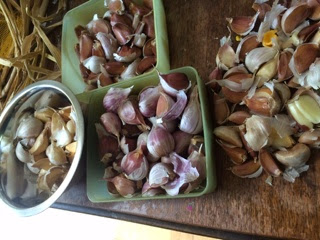 |
My homemade felt poppies that I
proudly reuse year after year. |
Each year for Remembrance Day I wear my homemade
white peace poppy along side my red poppy, so that not only am I remembering all the soldiers who died for a cause, but also all the civilians, animals and nature, who had no choice in being involved in a political conflict. In the past I have been criticized for my choice to wear a peace poppy, but this year I feel more confident thanks to my administrator who shares my views. She wore her own crocheted peace poppy, brought peace poppies for staff to wear and shared
on line resources to use with our classes.
My thoughts in previous years can be read
here and
here.
I am always trepidatious discussing the peace poppies and the impact of war beyond soldiers because I have been told it is disrespectful to soldiers. I am still unclear how advocating for peace and safety for all in any way diminishes the sacrifices of soldiers. I believe that it only serves humanity to discuss the impact of war upon everyone, including the environment. If we do not truly see war for what it is, for the true impact that it has, we are not doing everything we can to ensure that it will not happen again. But this year I felt emboldened by the actions of my administrator, and teacher librarian who read picture books with my class focussing on the impact of war upon animals. I also had a great conversation with another colleague who discussed the origins of the peace poppy movement with her class and how it started with mothers in the UK who were tired of seeing their husbands and sons die in wars.
As with previous years, I used the peace poppy web site to discuss these issues with my class, as well as looking at images of the aftermath of battles and the destruction of the environment. Then we made our own paper peace poppies to wear alongside the red poppies.
 |
The list of countries represented in my
school's parade of nations. |
I am especially proud of my school and colleagues for the wonderful job they do with the Remembrance Day ceremony and its focus on peace. Each year my colleague organizes a parade of nations to highlight the countries of origin for our multicultural community. I always have goosebumps watching the children proudly walk down the gym holding the name of their home country, some wearing clothing symbolizing their culture. We are from all over this world, but we are all of THIS world, living together, and it is for the good of all that we see beyond national boundaries and geopolitical battles and connect with one another. I always look forward to it.
 |
I borrowed a student's hat from Kyrgyzstan
after the parade of nations for a quick selfie.
My peace poppy is hidden underneath my hair. |
So today I will not forget the deep psychological sacrifices my grandfather made in World War II as an RAF navigator, nor will I forget all the women and children around the world who are raped as way to create terror in war-torn communities, the innocent families who are torn apart, and the fertile land that is destroyed by toxic warfare, land mines and drone attacks.













